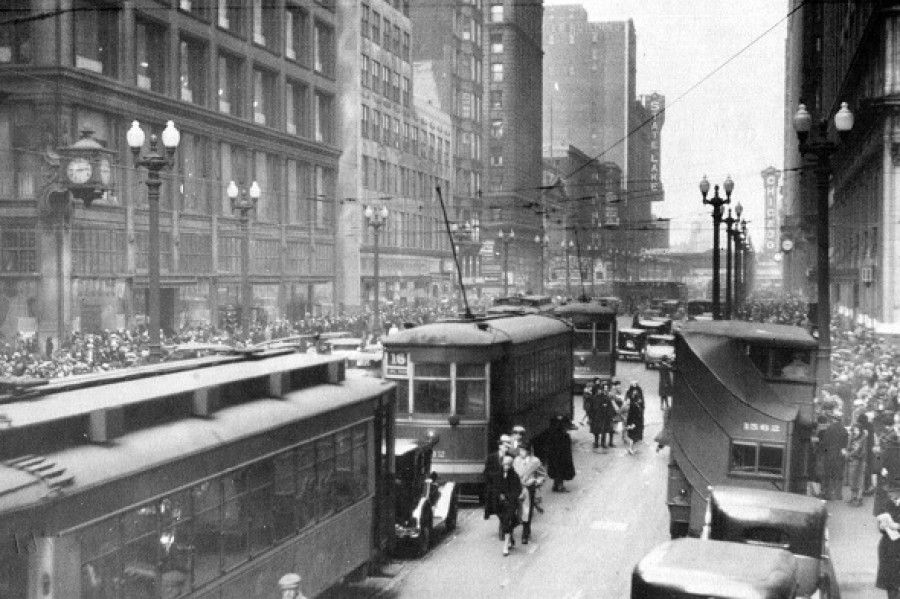This is the second in a series about Lena's family history on Chicago's West Side, primarily North Lawndale in the early 20th century. Find Part One (1889-1920) here.
1930 - Pat & Anna
Sometime in the 20s, my great-grandparents Pat and Anna bought a new house in North Lawndale. They're listed as property owners of 1814 S. Komensky by the time of the 1930 census, which must have been an important piece of financial stability to have in the Depression. They even rented a unit to the Picka family of 4. Unfortunately the house isn't there anymore, but in this photo you can see it would have stood between a couple of similar workers cottages.
Ed was an athletic guy growing up in the 30s. He always said he invented 16-inch softball, though that's highly debatable lol. In the winter he was a speed skater, and even competed in the famous Silver Skates competition in Garfield Park. Chicago had the most urban ice rinks in the country, with over six hundred dotting the parks and neighborhoods by the 20s. In the 20s and 30s, the Silver Skates competition attracted up to 60,000 spectators! (see Tribune photo below) Chicago may not have mountains or abundant wooded trails for skiing, but we have flat spots and water, so it makes sense that skating took off as the flat-lander's winter sport.
1930 - Bridie & Tim
Bridie & Tim moved west when they got married, but not straight to North
Lawndale. Their first home listed in the 1930 census is a frame house in
the near suburb of Cicero, at 1340 48th Ct (right), where they did not own a radio.
They rented their unit for $35/month from the Lithuanian Laemont family of
four, whose father and son worked in a nearby factory. Bridie & Tim's
eldest, Daniel, was now 8 and joined by my grandmother Mary Ellen (6) and Vincent (4).
In 1930 census, Bridie & Tim's birthplace was listed as “Irish Free State," no longer under the English empire as another reflection of changing world politics.
1930 census records show Tim, Bridie, Daniel, Mary E., and Vincent rented for $35. Listed categories are sex, race, age, marriage status, literacy, birthplace, & parents' birthplaces. Second screenshot shows language spoken, year of immigration (1912), naturalization status (Na), employment info, and WW indicates he's a veteran of the great World War.By this time Tim had started his career as a conductor on the Chicago Surface Lines. In a famous family tale, Bridie had always dreamed of her own sewing machine. So as a wedding present, Tim brought a Singer home for her on the streetcar. But this was no desktop device, it was a massive cast-iron treadle machine, with a beautiful Egyptian painted motif. That's like bringing a huge wooden desk on the bus today!
He must have had a friend help
him or something, but it also may have been completely normal. Like many
neighbors, the family never owned a car. They took transit and walked
everywhere in those days. Chicago's streetcar ridership was 1,517,510,661 in its peak
year, 1926, with over 280 rides per citizen for just streetcars! I wonder where he bought the sewing machine, and what streetcar line
he might have taken to get home. Was it Cicero? Roosevelt? 16th street?








